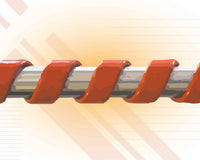This article originally appeared on DoItYourself.
One of the most important parts of a mobile is the underside. Repairing the underside of a mobile home is much easier than replacing it, but when repair is not an option, polyethylene material is a godsend.
Polyethylene is a covering that has been used on late model mobile homes manufactured in the 1980s through today. It’s a cost-effective product, and it has saved many homeowners much needed cash.
What Is the Underside of a Mobile Home?
The underside of the mobile is just that -- the underneath. Many people call the underside by different names such as underbelly, belly board, sheeting, bottom wrap, belly, barrier, bottom board, belly wrap, or closure paper. In actuality, all of those names are used to describe the underside or the coverings used to seal the underside.
Why Is the Underside of a Mobile Home Important?
The mobile home underside is important because it protects the insulation, prevents moisture from seeping, and keeps out unwanted pests. Pests can wreak havoc on a mobile home. Rats, ants, fleas, ticks, and other pesky critters can find their way into mobile homes, costing homeowners thousands of dollars down the road.
Inspecting the Underside of a Mobile Home
When inspecting the underside, look for holes, rips, and tears in the covering. If you notice any openings, look inside. Examine at the insulation for signs of rodents, insects and moisture.
The underside of the mobile home should be inspected once every 3 months and always after severe weather, especially if the mobile home does not have a foundation.
Repairing the Underside of a Mobile Home Using Polyethylene
Because polyethylene is a thin and flexible material, it’s easy to patch. If the underside of the mobile home has a few holes, small repairs work better than total replacement.
To patch imperfections in polyethylene, you’ll need a compatible tape. Flex Mend tape is a popular brands. If you can peel and stick a band-aid, you can use Flex Mend. It currently meets all mobile home requirements. It has a solid coating of specifically formulated adhesive and a simple paper release liner; it makes permanent repairs.
Clean the area which is to be repaired and stuff a little extra insulation into the hole. Next, cut a strip of Flex Mend tape that’s about an inch longer than the piece being repaired. Remove the paper backing and apply it. Apply heat to the tape covering the area using a heat gun or a hairdryer while rubbing the tape in order to form a bond. Do not overheat.
Replacing the Underside of a Mobile Home Using Polyethylene
Replacing polyethylene is more difficult than repairing it because there’s limited working room under the mobile home; furthermore, pipes and ductwork tend to hang down, making the job tedious.
Most people see existing belly wrap on the underside of other mobile homes and notice that the polyethylene seems to drape over the I-beams with a little sag between each of them. Most often, it’s not possible to feed the polyethylene over the I-beams. Working in between the beams is sometimes the only choice.
It’s best to start at the rim joist, which is the outermost edge. Wrap the polyethylene in a lathe strip and carefully tack the polyethylene using a nail or a screw.
If you’re working beside the main I-beam, it’s easier to simply attach the lathe to the floor joists because the top of the beams are flat against them. Unhooking as many items as possible is the best bet for a neater, longer lasting job. Carefully cut around items that cannot be removed.
Contrary to what some say, do not stuff insulation into floor joists. Rather than prevent moisture, you could be trapping it, which will eventually cause the floors to rot. It’s best to attach paper back insulation to the polyethylene using plain silicone.
Replacing the underside with new polyethylene for the beginner is possibly an all day job. Be aware of what you’re dealing with first. Crawling under your mobile home, evaluating the parts that can be removed, realizing the parts that may cause some trouble, and checking the space between the floor joists and the I-beams are worth taking the time to do properly.
When a mobile home owner is familiar with the dwelling, the job goes much more smoothly. The first time is the hardest, but once you complete a polyethylene replacement, the next time will be a piece of cake.






